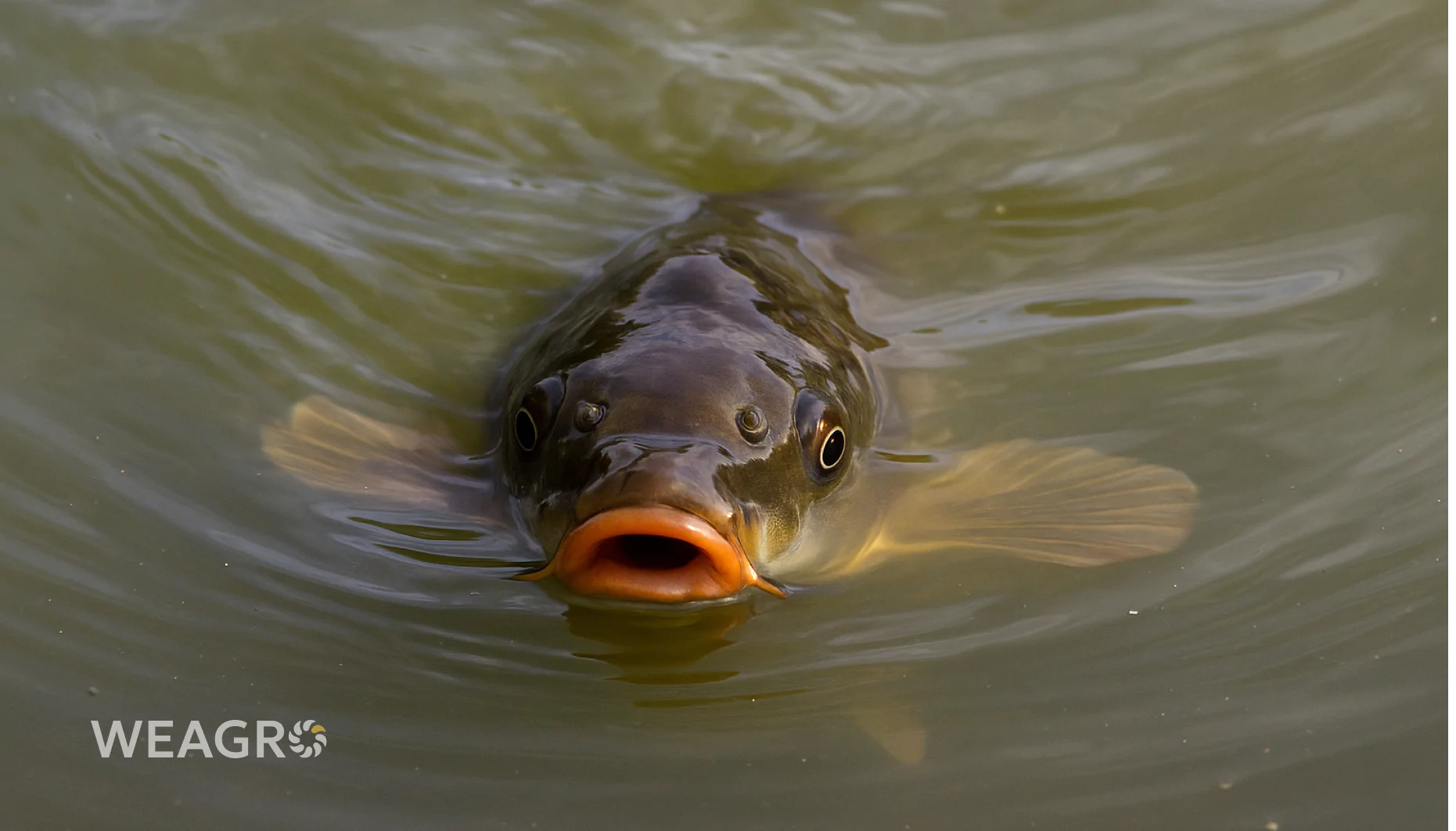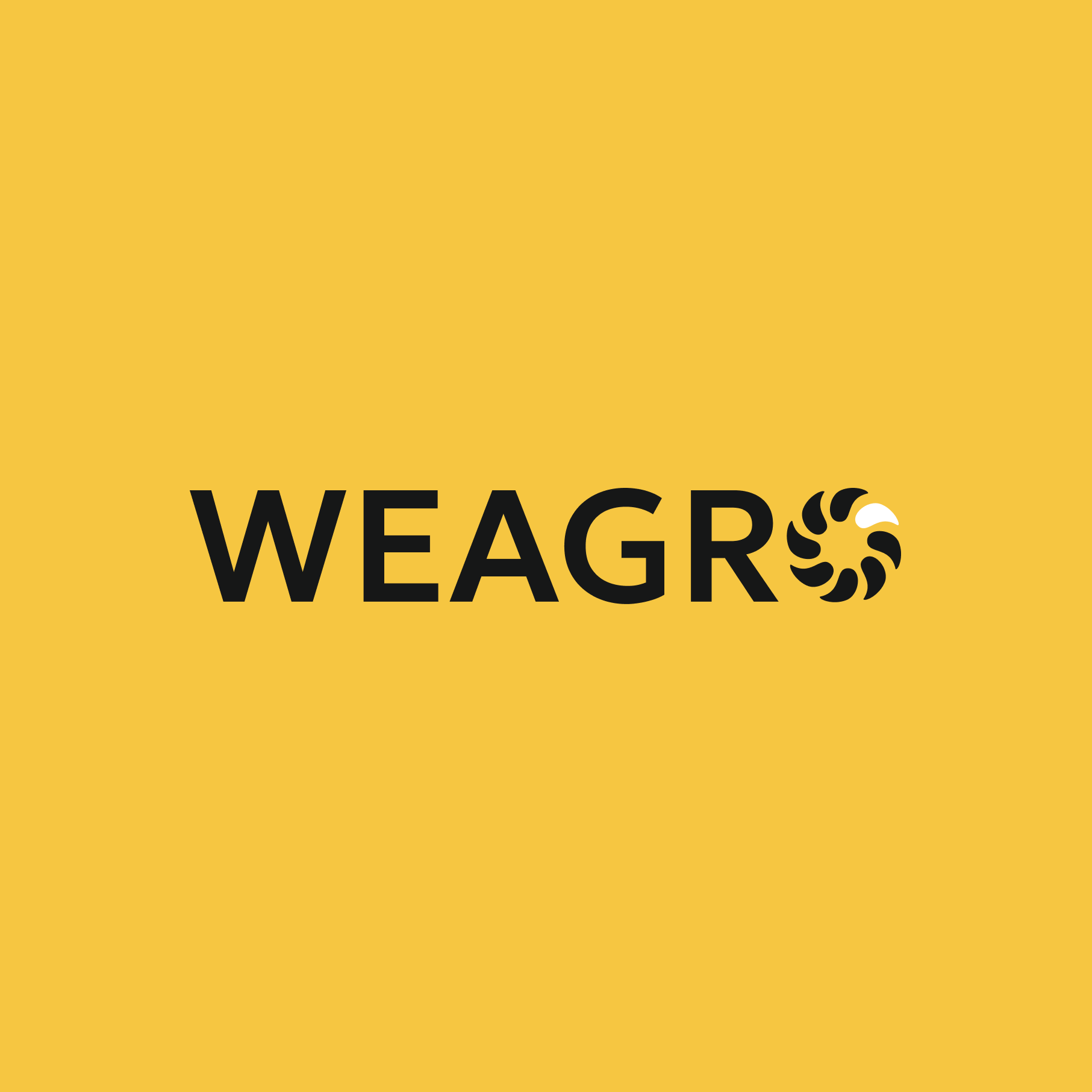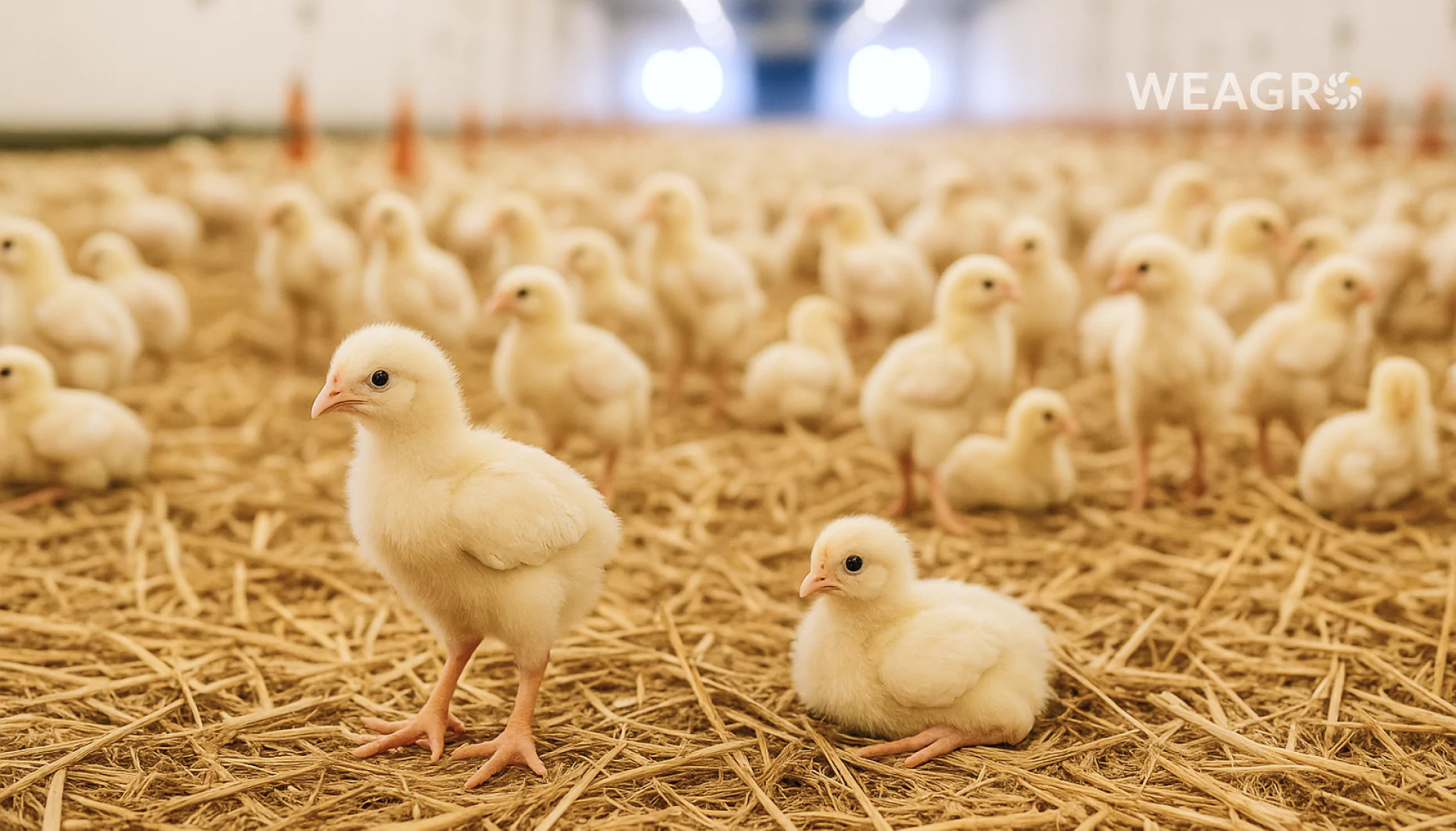Aquaculture is the cultivation of aquatic organisms such as fish, mollusks, crustaceans, and algae under controlled conditions. In Ukraine, this sector has significant development potential due to favorable natural resources and growing demand for fish products. This article will reveal the current state, types, prospects, and challenges for Ukrainian aquaculture, as well as opportunities for state support of the industry.
Aquaculture in Ukraine
The total area of water bodies in the country suitable for fish farming is approximately 1.3 million hectares, of which only 60% is actively used. According to data from the State Fisheries Agency, Ukraine has over 45,000 hectares of ponds, 250,000 hectares of reservoirs, 850,000 hectares of lakes, and 4,500 hectares of estuaries suitable for aquaculture.
There is positive growth dynamics in production volumes. In 2021, 12.9 thousand tons were produced, in 2022 – approximately 14.6 thousand tons, and in 2023 production volume reached 15.3 thousand tons of aquatic bioresources. Specifically, in 2023, the production structure included 14,750.8 tons in ponds, 53.55 tons in cages, 184.89 tons in tanks and basins, and 281.59 tons in recirculating aquaculture systems. Despite the growth, these indicators are still significantly lower than the industry’s potential capabilities.
The fish farming sector is represented by both full-cycle farms engaged in reproduction, cultivation, and processing of fish, and farmers specializing in individual production stages. In total, more than 3,500 enterprises are involved in the industry, most of which are small and medium-sized businesses.
Despite positive dynamics, fish consumption in Ukraine remains low – approximately 13 kg per person per year, which is significantly less than the WHO recommended norm of 20 kg and almost half the global average of 20.5 kg. At the same time, 90% of fish consumed by Ukrainians is imported. In 2023, import volume amounted to 330,000 tons of fish and seafood worth $932 million.
This situation is caused by both insufficient domestic production and low purchasing power of the population. Local fish is often more expensive than imported fish due to higher production costs. The development of fish farming in Ukraine can satisfy the growing demand for quality products, reduce import dependence, and stabilize prices in the domestic market.
Types and Directions of Aquaculture in Ukraine
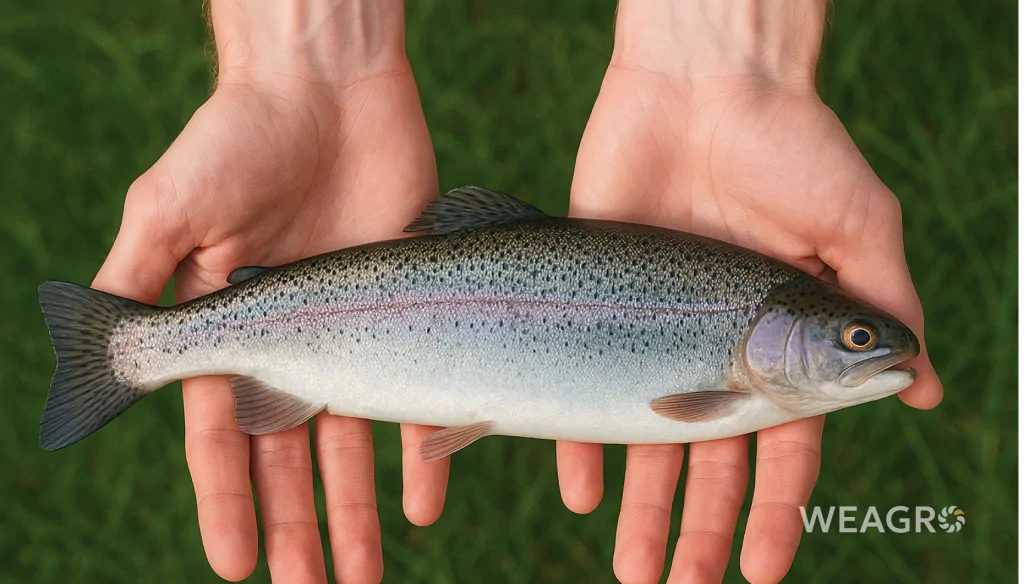
Thanks to favorable natural and climatic conditions, the presence of numerous inland water bodies, and a developed water management system, various directions for cultivating such bioresources have formed in the country.
Aquaculture by Activity Directions
Aquaculture in Ukraine encompasses several main activity directions. The most common is commercial production – cultivation of fish, mollusks, and crustaceans for sale in domestic and foreign markets.
Another important direction is artificial breeding (reproduction) and production of aquatic bioresources for stocking natural water bodies and replenishing stocks. During 2023, fish hatcheries
Additionally, aquaculture also serves important recreational functions, providing amateur and sport fishing services and organizing recreation at water bodies. Many farms offer paid fishing at their ponds where visitors can catch and purchase fresh fish. Some enterprises also develop rural green tourism, providing comprehensive accommodation, dining, entertainment, and excursion services for visitors.
Aquaculture by Production Intensification Level and Technology
By production intensity level, extensive, semi-intensive, and intensive fish farming are distinguished.
Extensive aquaculture involves growing fish in natural or minimally modified water bodies with minimal intervention in feeding and environmental control processes. This method is most common in Ukraine, especially in pond fish farming. Its advantages are low production costs and simplicity of implementation, while disadvantages include low fish productivity and dependence on natural conditions.
Semi-intensive aquaculture is based on growing fish in water bodies with artificial feeding and partial environmental control. This method allows increasing fish productivity by 2-3 times compared to extensive farming but requires additional costs for feed, fertilizers, and disease prevention measures. In Ukraine, most full-cycle farms operate on this principle.
Read also: Farm Enterprise: What It Is, Types, How to Name and Register
Intensive aquaculture involves growing fish in artificially controlled conditions with high stocking density, complete feeding, and environmental parameter regulation. This method ensures maximum fish productivity at 100-200 kg/m³ but is the most expensive and technologically complex. In Ukraine, approximately 50 farms engage in intensive aquaculture using recirculating aquaculture systems.
Commercial Aquaculture Directions
Main commercial aquaculture directions include:
- Pond fish farming – cultivation of carp, silver carp, grass carp, and pike in artificial water bodies ranging from several to hundreds of hectares. Pond aquaculture accounts for approximately 96.6% of production. The largest industry enterprises are located in Odesa, Cherkasy, and Vinnytsia regions.
- Cage or lake fish farming – cultivation of trout, sturgeon, and catfish in floating cages installed in rivers, reservoirs, lakes, and marine waters. This direction is actively developing in Zakarpattia, Prykarpattia, and the Black Sea coast. Cage productivity can reach 50-100 kg/m³.
- Industrial fish farming – cultivation in basins, troughs, and recirculating aquaculture systems. The most common species are African catfish, tilapia, eel, sturgeon, salmon, and Australian crayfish. Industrial farms are located mainly in central and eastern regions of the country.
- Mariculture – cultivation of marine fish species, mollusks, crustaceans, and algae under controlled conditions. In Ukraine, this direction is represented by mussel and oyster farms on the Black Sea shelf. Active development of shrimp, mullet, and algae cultivation technologies is ongoing.
In recent years, Ukraine has witnessed a transition from extensive to intensive aquaculture, implementation of modern water recirculation systems, feeds, and breeding programs. This is facilitated by both growing demand for valuable fish species and seafood, and limited water and land resources.
The most common fish farming species in Ukraine are traditional freshwater species – carp, silver carp, grass carp, pike-perch, pike, and catfish. They account for over two-thirds of the industry’s commercial production. At the same time, producer and consumer interest in valuable species is growing – rainbow trout, brook trout, sterlet, bester, tilapia, eel, and Australian red claw crayfish.
Potential capacity of marine farms is estimated at 20-30 thousand tons of mollusks per year. Improvement of coastal farms for cultivating marine fish species – sea bream, sea bass, turbot – is also promising.
An important factor in local aquaculture development is the implementation of digital technologies, automation, and precision fish farming. Modern water parameter monitoring systems, feeding control, and fish accounting allow optimizing production processes, reducing costs, and increasing farm efficiency.
Online service WEAGRO provides farmers with the opportunity to purchase necessary goods and services for aquaculture in installments, without collateral and excessive documentation. This significantly simplifies producers’ access to quality feeds, equipment, and veterinary supplies and promotes technological modernization of the industry. Often, lack of working capital becomes an obstacle to farm modernization.
Prospects for Aquaculture Development in Ukraine
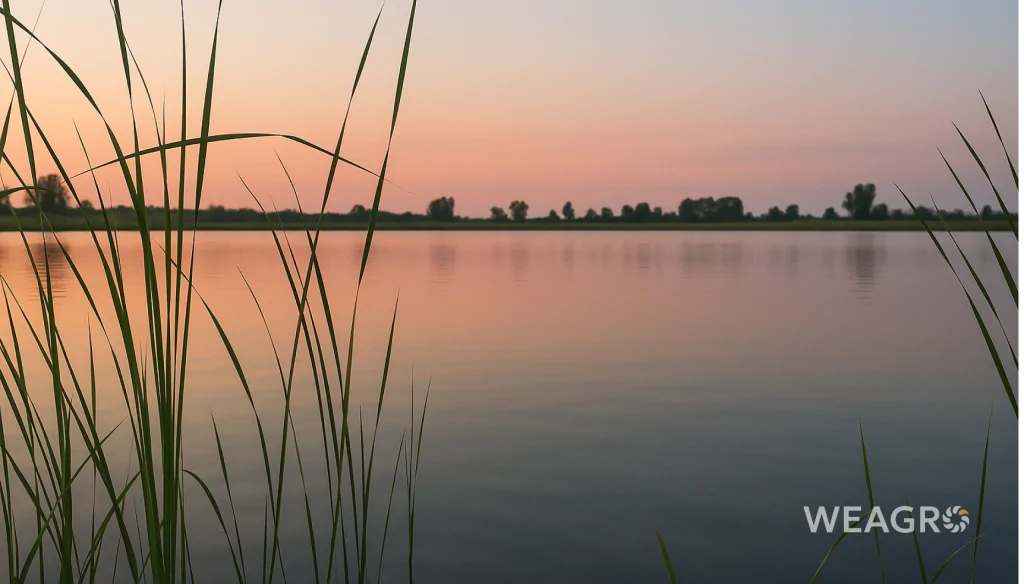
Aquaculture has significant development prospects in Ukraine due to several key factors.
First, growing domestic demand for fish and seafood stimulates production volume increases. According to FAO forecasts, fish consumption in the country will grow to 15-16 kg per person per year by 2030. This opens opportunities for Ukrainian fish farming to achieve import substitution and saturate the market with high-quality local products.
Second, the Association Agreement with the EU provides prospects for duty-free export of Ukrainian fish and seafood to the European market. The European Union is the world’s largest importer of fish products, and its market is valued at 30 billion euros. Ukrainian producers already export trout, pike-perch, sturgeon, and caviar to the EU. However, export potential is far from exhausted. For example, Ukrainian Black Sea mussel producers do not meet EU needs at all, as they cannot compete in quality and price with Chilean exporters.
Additionally, Ukraine has the potential to become a regional hub for processing imported products for subsequent export to the EU. The principle of diagonal cumulation within the Pan-Euro-Med framework allows working with Norwegian and Icelandic aquaculture products locally with subsequent duty-free export to the European Union. Ukrainian companies are already increasing deep processing capacities for Norwegian salmon and herring. According to estimates by UkraineInvest analysts, Ukraine can increase fish catch and production to 400,000 tons per year by attracting $3.6 billion in investments.
Challenges for Ukrainian Aquaculture
At the same time, Ukrainian aquaculture development faces several challenges that need to be addressed. Among them:
- outdated material and technical base of most fish farms;
- high cost of feeds, energy resources, and equipment for intensive fish farming;
- imperfect legislation regarding water body leasing and aquaculture licensing;
- shortage of qualified personnel, especially in modern fish farming methods;
- low level of cooperation and vertical integration in the industry.
To overcome these challenges, systemic changes in state aquaculture policy are necessary. In particular, it is important to simplify permitting procedures, introduce preferential lending and taxation, and stimulate investments in modern fish farming technologies.
Read also: What Is Installment Payment: Difference Between Credit and Installment
Support for Ukrainian Aquaculture
State support for fish farming in Ukraine is insufficient compared to other countries. Specifically, the EU has allocated over 6 billion euros for fisheries and aquaculture development for 2021-2027.
In Ukraine, there are currently only plans to introduce individual aquaculture support instruments:
- compensation for the cost of construction and modernization of fish farming facilities;
- subsidized loans for purchasing feeds, equipment, and breeding stock;
- compensation for losses from product damage by fish predators.
At the same time, the state can promote aquaculture development through scientific research and development. The country has approximately 15 specialized research institutions and universities that can serve as a base for technological support of the industry.
WEAGRO is an innovative financial service that makes purchasing goods for aquaculture simpler and more accessible. Thanks to quick installment processing without collateral and excessive documentation, fish farms can effectively plan their expenses and develop production. This is especially important for small and medium enterprises that gain the opportunity to purchase necessary equipment, feeds, and materials when needed, not only when free funds are available.
